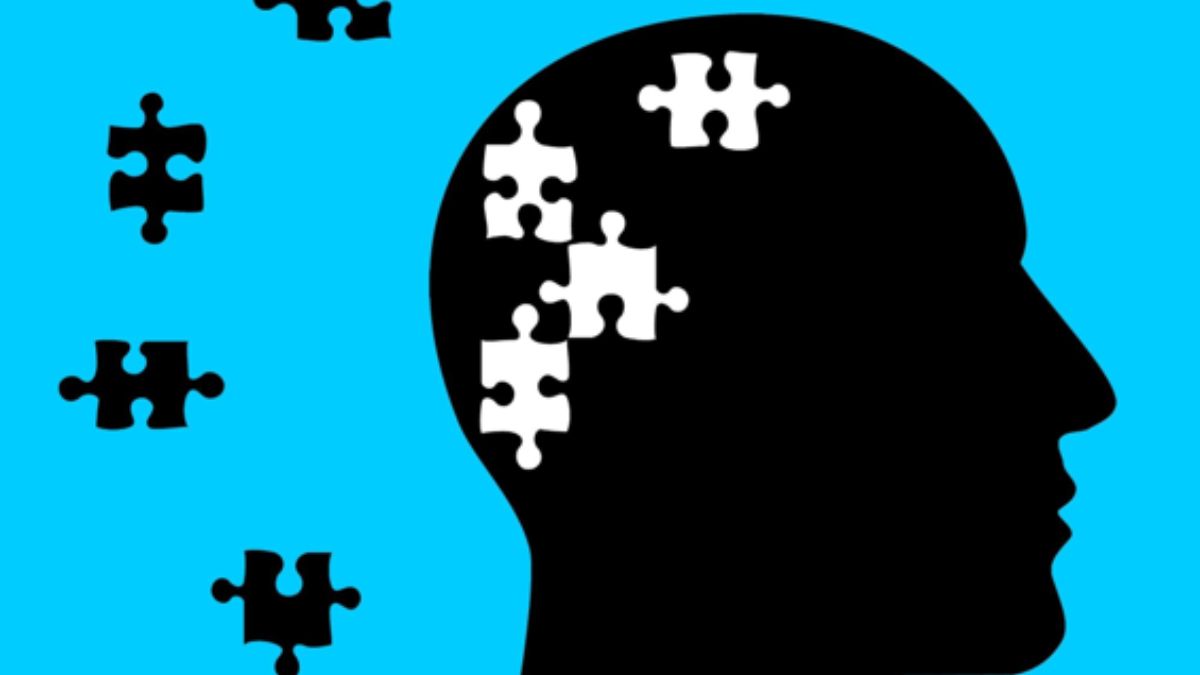HEALTH
Contact Lenses: Trends, Tips, and Vision Care

Contact lenses offer a convenient vision correction option with various trends, including new materials and designs for comfort. Proper care involves regular cleaning, correct usage, and timely replacement to avoid infections. Staying updated on trends and following care tips helps maintain optimal vision and eye health.
Why Contact Lenses?
Many people choose contact lenses for their convenience and comfort. Contact Lens Care Solutions provides a practical solution if you want a break from traditional glasses or need better peripheral vision. In addition to having a more comprehensive range of vision than glasses, contact lenses don’t fog up, making them perfect for sports and other activities. Additionally, contact lenses can stay in place during rigorous movements for those who enjoy an active lifestyle, unlike glasses that may slip or fall.
Contact lenses provide a natural look, boost self-confidence, and are suitable for vision problems such as nearsightedness, farsightedness, astigmatism, and presbyopia. They offer a more natural appearance and cater to a wide range of visual needs, making them a versatile option for many.
Different Types of Contact Lenses
Soft Contact Lenses
Soft contact lenses are flexible plastics that allow oxygen to pass through the cornea, providing comfort and ease of use. They adhere closely to the eye’s shape, offering flexibility in daily, weekly, and monthly disposables, catering to various lifestyle and eye care needs.
Rigid Gas Permeable Lenses
Rigid gas-permeable lenses are durable, sharper, and allow oxygen to reach the eyes. However, they may take longer to adjust. They are recommended for individuals with irregular corneas or high astigmatism, where soft lenses may not provide sufficient correction or stability.
Toric Lenses for Astigmatism
Toric lenses correct astigmatism, providing clarity on both vertical and horizontal axes. They have different powers in lens meridians, addressing uneven eye curvature. They are available in soft and rigid gas-permeable materials, offering various options.
Multifocal Lenses for Presbyopia
As we age, presbyopia, a condition where our ability to focus on close objects decreases, can be corrected with multifocal lenses. Like bifocal or progressive spectacles, these lenses offer sharp vision at various distances, improving the quality of life for people who require daily correction.
Trends in Contact Lens Technology
Advancements in contact lens technology have made lenses more breathable, comfortable, and practical. Smart lenses are being developed to enhance vision beyond human eyes, adjusting focus automatically. These lenses promise to improve visual acuity and monitor health conditions. Additionally, blue light filtering lenses can reduce eye strain from long computer hours. Silicone hydrogel lenses offer increased oxygen permeability for healthier, more comfortable wear. These innovations aim to integrate technology seamlessly into everyday life.
Tips for First-Time Wearers
Wearing contact lenses can be daunting for first-timers. Here are some helpful tips:
- Start with short wear times and gradually increase. This allows your eyes to adjust to the lenses gradually, reducing the risk of discomfort and irritation.
- Always wash your hands before touching lenses. Clean hands prevent the transfer of dirt, oils, and bacteria to the lenses, which can cause infections or irritations.
- Follow the lens care routine advised by your optometrist. Proper cleaning, rinsing, and storing methods are crucial for maintaining lens hygiene and eye health.
- Only sleep with your lenses in if prescribed. If you wear contacts while sleeping, the oxygen flow to your eyes may be reduced, which increases the risk of issues such as corneal infections.
Transitioning to contact lenses can be smoother and more comfortable with these tips, but patience and consulting an eye care professional are crucial.
Proper Care and Maintenance
Maintaining contact lenses is crucial for longevity and safety. Follow the eye care provider’s recommended solutions and replace lenses every three months to prevent bacteria buildup. Regularly rubbing and rinsing lenses with appropriate solutions, even using “no-rub” formulas, ensures thorough cleaning and disinfection. For cleaning and storage, adhere to the directions provided by the optometrist; do not use saliva or tap water to wipe lenses. Consistent care routines can reduce contamination risks.
Common Myths Debunked
Misconceptions about contact lenses include the belief that they can get stuck behind the eye, which is untrue due to the eye’s anatomy. Modern lenses are designed for comfort and usability, with advanced materials providing breathability and moisture retention. Overwearing lenses can cause vision problems, but adhering to a prescribed care routine can prevent complications. It’s crucial to differentiate between fact and fiction to make informed choices about vision care and alleviate unnecessary fears.
Regular Eye Exams: Importance and Frequency
Maintaining excellent vision health requires routine eye exams, which enable early diagnosis of any issues and proper contact lens prescription. These exams allow optometrists to assess eye health, check for signs of eye diseases, and update prescriptions. They also provide:
- Valuable advice on managing discomfort.
- Proper lens usage.
- The latest advances in lens technology.
Prioritizing regular eye exams is crucial for overall eye health and prompt resolution of vision changes.
Resources and Recommendations
The American Academy of Ophthalmology and the CDC offer valuable eye health and vision care technology resources. These resources provide comprehensive guides on eye conditions, treatments, and preventive measures. Referring to authoritative sources helps individuals make informed decisions about eye care, empowering them to take proactive steps and seek timely care. Consulting with eye care professionals for personalized recommendations can enhance the contact lens experience and overall eye health.
HEALTH
A Comprehensive Guide to Ketamine for Pain and Mental Health

Did you know that a medication once used mainly for anesthesia is now changing lives in pain management and mental health treatment? Ketamine has gained attention for its ability to help people struggling with chronic pain, depression, anxiety, and PTSD.
Unlike traditional treatments that may take weeks to work, ketamine often provides relief in just hours. As more people explore this innovative therapy, understanding its benefits, risks, and what to expect is essential. Continue reading to get the complete picture.
How Ketamine Therapy Works
Ketamine is used in controlled medical settings to help individuals who have not found relief with other treatments. One of the most remarkable aspects is how quickly it works. Traditional antidepressants take time to build up in the system, but ketamine can lift mood and reduce symptoms of depression within a day.
This fast response is due to its effect on the brain’s neural connections. By encouraging neuroplasticity, ketamine helps repair and create new pathways, allowing the brain to function more effectively.
The Benefits of Ketamine Therapy
Ketamine therapy has shown impressive results for people dealing with the following:
- severe depression
- anxiety
- PTSD
- chronic pain
Patients often report feeling lighter, more balanced, and less burdened by emotional distress after treatment. Those suffering from long-term pain conditions have also found relief, allowing them to enjoy daily activities with greater ease.
Unlike many traditional medications, ketamine does not come with the same level of side effects. While some antidepressants can lead to weight gain, drowsiness, or sexual dysfunction, ketamine therapy often avoids these complications. By working differently than typical medications, it offers a promising alternative for those who have struggled to find relief.
Understanding the Risks
Like any medical treatment, ketamine therapy has some risks. During a session, patients may experience dissociation, which creates a sense of detachment from reality. This feeling is temporary and usually fades after the treatment ends.
Some people also experience mild dizziness or nausea. There is also a potential risk of dependency if it is used too frequently without proper medical supervision.
Because of this, it is important to work with a trained healthcare provider who can create a safe and effective treatment plan. Patients should always discuss their medical history, current medications, and personal needs before starting therapy.
What to Expect During Treatment
A typical ketamine session begins with an evaluation by a healthcare professional. After determining that ketamine treatment is right for you, the process takes place in a calm, supervised environment. The medication is usually given through an IV infusion or a nasal spray, depending on the individual’s needs.
Many patients describe a floating or dreamlike sensation during the treatment, and some report experiencing a new sense of clarity afterward. While the first session may feel unfamiliar, most people adjust quickly and find the experience beneficial. A trusted support system, whether through a therapist, friends, or family members, can help make the process even more effective.
Taking the First Step Toward Healing
Choosing to explore ketamine therapy is a step toward healing and well-being. With its unique effects and promising results, this treatment is changing lives and giving hope to those in need. Finding the right support is key, and working with a knowledgeable clinic can make all the difference.
Explore and learn how ketamine therapy can help you move toward a brighter future. Stay inspired. Head to our blog for even more helpful content!
HEALTH
Rising Trends in Orthodontic Treatments: What Patients Need to Know

Orthodontic treatments have changed a lot in recent years. New technology and patient needs have shaped the way treatments are done. In the past, getting braces meant wearing metal brackets and wires for years.
Now, many people have more options for straightening their teeth. These new treatments focus on comfort, speed, and appearance.
If you are thinking about orthodontic care, it helps to know about these changes. Dive in to discover how this can benefit you.
The Rise of Clear Aligners
Clear aligners have become one of the most popular options for straightening teeth. Unlike traditional braces, they are nearly invisible and can be removed when eating or brushing. Many adults and teens choose aligners because they are more discreet than metal braces.
They can help with problems like crowding, spacing, and mild bite issues. More people are choosing them because they fit easily into everyday life. Clear aligners are made from smooth plastic, which makes them more comfortable than traditional braces.
There are no metal brackets or wires to cause irritation. Patients can also take them out when eating or drinking, which means fewer food restrictions. Cleaning is easier too, since patients can brush and floss their teeth as usual.
Faster Orthodontic Treatments
Many people want results quickly. In the past, orthodontic treatment could take two to three years. Today, new methods help move teeth faster. Some people see results in as little as six months to a year.
Some treatments use small devices that help teeth shift more quickly. These methods stimulate the bone around the teeth, making movement faster. Patients who qualify for these treatments can cut months off their treatment time.
The Role of Technology in Orthodontics
Technology has changed the way orthodontic treatments are planned. In the past, patients had to bite into messy molds so their orthodontist could study their teeth. Now, digital scans create 3D models of the mouth.
3D imaging gives orthodontists a clear picture of a patient’s teeth and jaw. This helps them plan the best way to move the teeth. Patients can also see a preview of their results before treatment even starts.
Orthodontists also use 3D printing to create custom appliances. This speeds up the process and improves the fit of devices like clear aligners.
Custom Treatment Plans
Every patient is different. New technology allows orthodontists to design treatments based on each person’s needs. With the help of computer programs and artificial intelligence, they can plan the best way to move teeth.
Custom treatment plans lead to better results. Instead of using a one-size-fits-all approach, they can tailor treatments to fit a patient’s specific needs. This leads to faster and more effective results.
Digital Impressions vs. Traditional Molds
For years, patients had to bite into a tray filled with a thick, gooey material to get dental impressions. Many people found this uncomfortable. Now, digital impressions have replaced traditional molds.
Digital scanners capture accurate images of the teeth in just a few minutes. This method is faster, cleaner, and more comfortable for patients. It also improves the accuracy of custom-made devices like aligners and retainers.
Teleorthodontics: Virtual Consultations and Remote Care
Teleorthodontics is another growing trend. Many orthodontists now offer virtual consultations and remote check-ins. This makes it easier for patients to receive care without always needing to visit the office.
Patients can connect with their orthodontist through video calls or apps. They can share pictures of their teeth and get treatment updates without an in-person visit. This is especially helpful for busy patients or those who live far from an orthodontic office.
This makes treatment more accessible. More people can now get expert advice and regular follow-ups without traveling long distances.
Patient Education and Communication
Patients today want to understand their treatment options. Orthodontists are providing more educational resources to help people make informed decisions.
Many orthodontic clinics have websites with educational videos and guides. Some even offer webinars and virtual consultations to answer common questions. When patients are well-informed, they are more likely to follow their treatment plans.
Aesthetic Considerations in Orthodontics
More patients want treatments that look natural. They are choosing options that blend with their teeth instead of standing out.
For those who need traditional braces, there are now ceramic or tooth-colored brackets that are less noticeable. Some braces even come with colored bands, allowing patients to personalize their look.
Environmentally Friendly Orthodontics
Sustainability is becoming a bigger concern in healthcare, including orthodontics. Many patients are looking for eco-friendly options when choosing their treatment.
Many orthodontic clinics are using recyclable materials and reducing waste. They are also switching to energy-efficient equipment to lessen their environmental impact. Most patients consider sustainability when choosing their orthodontic provider.
Understanding Treatment Costs
As orthodontic treatments improve, costs remain an important factor. Clear aligners often cost more than traditional braces. However, many patients find the benefits worth the extra cost.
Many orthodontic clinics now offer payment plans to make treatment more affordable. Some even work with insurance providers to help cover part of the cost. Patients should ask about their options before choosing a treatment.
Choosing the Right Orthodontic Clinic
Finding the right orthodontic provider is an important step. Patients should look for a clinic that offers the latest technology and personalized care. A consultation is a great way to ask questions and learn about treatment options.
It also helps patients feel confident about their choices. The right orthodontist will explain the process clearly and help create a plan that fits each patient’s needs. A trusted option, such as Eagan Orthodontics, provides expert care and advanced treatments to ensure patients achieve the best results for their smiles.
The Future of Orthodontics
Orthodontic treatments are constantly evolving. As technology improves, treatments will become even faster and more comfortable. Patients will continue to have more choices for achieving their perfect smile.
If you are thinking about orthodontic treatment, now is a great time to explore your options. New trends are making treatment easier and more effective than ever before.
Feel free to explore more! Our blog has everything you need to know!
HEALTH
Understanding the Connection Between Nutrition and Headache Relief

Have you ever felt a sharp pain when you have a headache? It can be hard to do anything when your head hurts.
Many people don’t realize that headaches can sometimes be related to what we eat. Proper nutrition plays a big role in our overall health, and it can even help with relief from headaches.
Read on to learn about nutrition and headache relief.
How Nutrition Affects Our Bodies
Our bodies need a variety of nutrients to function well. These include carbohydrates, proteins, vitamins, and minerals. When we eat balanced meals, we provide our bodies with the energy and nourishment they need. However, if we miss out on essential nutrients, it can lead to various issues, including headaches.
For instance, not drinking enough water can cause dehydration, one of the common triggers for headaches. Dehydration can lead to headaches in more than half of the people who experience this condition. This shows that proper nutrition, such as staying hydrated, is important for headache management.
Identifying Food Triggers
Not all foods are friendly when it comes to preventing headaches. Some foods can actually trigger migraines or tension headaches.
Common culprits include processed foods, foods high in sugar, and those containing caffeine. For example, if you notice a headache on the left side of my head after consuming chocolate or cheese, it could be a sign these foods trigger your headaches.
Additionally, certain food additives, like MSG (monosodium glutamate), may cause headaches for some people. Keeping a food diary can help you identify any links between the foods you eat and your headache frequency.
The Importance of Balanced Meals
Eating balanced meals is essential in preventing headaches. Proper nutrition involves a mix of fruits, vegetables, whole grains, and proteins. These foods provide key vitamins and minerals that your body needs.
Fruits and vegetables, such as bananas and leafy greens, are great for hydration and provide minerals like potassium, which helps manage blood pressure. Whole grains, like brown rice and oats, provide enough energy to keep you going throughout the day.
How Vitamins Can Help
Did you know that certain vitamins can help relieve headaches? Vitamin B2 (riboflavin) and magnesium are two nutrients often associated with headache prevention. B2 helps improve the body’s energy levels and has been shown to help reduce the frequency of migraines.
Magnesium can also be beneficial; research suggests that people who suffer from frequent headaches have lower levels of magnesium compared to those who don’t. Incorporating these foods into your meals can help you get the proper nutrition needed to potentially ease your headache pains.
Staying Hydrated
As mentioned earlier, hydration is critical in managing headaches. Water is one of the most efficient ways to prevent headaches caused by dehydration. Aim to drink at least eight glasses of water each day. If you are exercising or spending time outdoors, it is essential to drink even more.
Including hydrating foods in your diet can also help. Fruits like watermelon, oranges, and cucumbers have high water content and can keep you hydrated. So, the next time you feel a headache coming on, ask yourself if you’re drinking enough water or eating hydrating foods!
Getting the Right Nutrition
Understanding the connection between proper nutrition and headache relief can be a game changer. By focusing on a balanced diet, identifying food triggers, and staying hydrated, you can support your body and potentially reduce headache frequency and intensity. With the right nutritional choices, you may just find a way to ease your pain and feel better!
Visit our website and read more.
-

 HEALTH10 months ago
HEALTH10 months agoIntegrating Semaglutide into Your Weight Loss Plan: A Practical Guide
-

 HOME IMPROVEMENT11 months ago
HOME IMPROVEMENT11 months agoHow to Choose the Perfect Neutral Area Rug for Every Room
-

 LAW10 months ago
LAW10 months agoTeenage Drivers and Car Accidents in California: Risks and Parental Liability
-

 CONSTRUCTION10 months ago
CONSTRUCTION10 months agoConstruction Site Safety Regulations in New York and Your Rights as a Worker
-

 LAW10 months ago
LAW10 months agoPost-Divorce Considerations in California: Modifications and Long-Term Planning
-

 LAW10 months ago
LAW10 months agoKentucky’s School Football: Concussions, Injuries, and Legal Options
-

 FINANCE10 months ago
FINANCE10 months agoDigital Asset Management in Florida Estate Planning
-

 LAW10 months ago
LAW10 months agoGang Activity and Criminal Charges in CA: Protecting Your Rights
